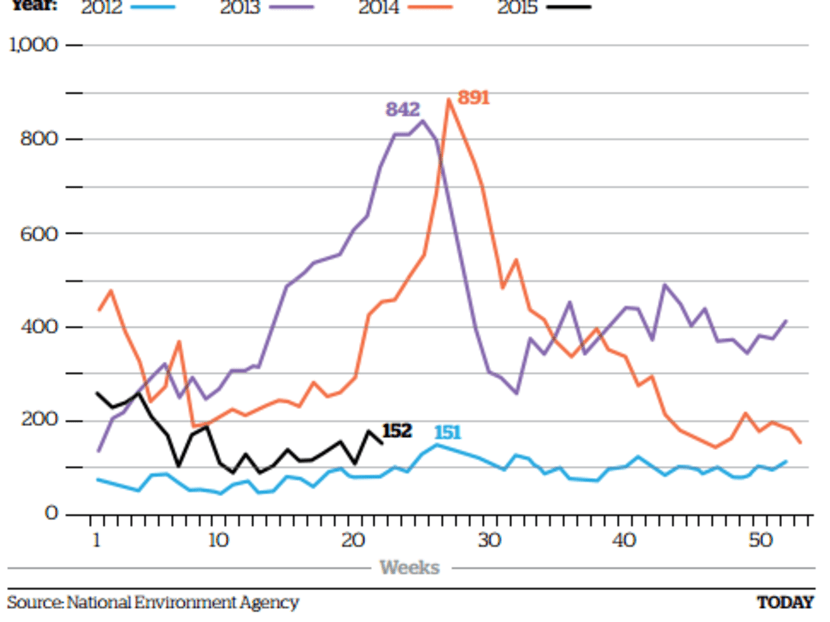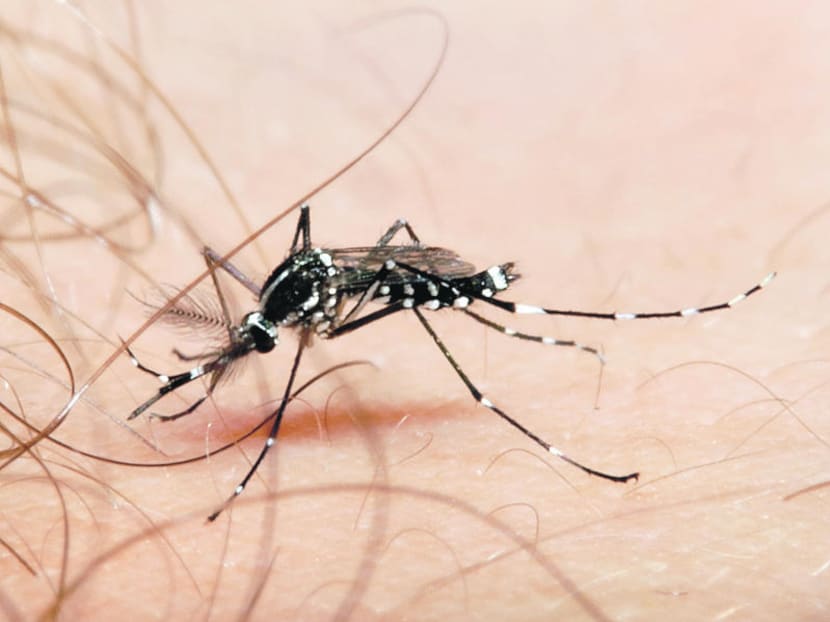Fewer dengue cases but Aedes mosquito population on rise: NEA
SINGAPORE — While the number of dengue cases reported in the first five months of the year so far is nearly half of what was reported in the same period a year ago, the Aedes mosquito population has grown as temperatures rise, said the National Environment Agency (NEA).
SINGAPORE — While the number of dengue cases reported in the first five months of the year so far is nearly half of what was reported in the same period a year ago, the Aedes mosquito population has grown as temperatures rise, said the National Environment Agency (NEA).
Urging vigilance against mosquito breeding, the NEA said 3,309 dengue cases were reported between January and May, 45 per cent less than last year’s figure of 6,015 for the same period. This year’s weekly figures were also down sharply compared to a year ago. A total of 155 cases were reported last week. In comparison, there were between 400 and 500 dengue cases weekly during the same period last year, while 2013 recorded between 600 and 700 cases.
(Click to Enlarge)

However, the number of dengue cases this year so far — 3,616 as of last night — remain higher than in 2012, the year before Singapore faced its worst dengue epidemic where more than 22,000 were infected and seven died.
Last month, the Aedes mosquito population was double that in May last year, and higher than the mosquito population peak in June 2014, as detected by the NEA’s Gravitrap surveillance programme. They are cylindrical devices with sticky surfaces used to trap Aedes mosquitoes.
The NEA also warned of an increase in transmission of the virus serotype DENV-2. The last serotype switch — from DENV-2 to DENV-1 — happened in March 2013, followed by a sharp dengue outbreak that year.
More dengue cases have been detected with DENV-2 since then, with the proportion of such cases rising from 18.3 per cent last year to approximately 44 per cent as of mid-May this year.
“As a large proportion of our population is still susceptible to dengue infection due to our low population immunity, an increase in the Aedes mosquito population in the warmer weather and an increasing proportion of DENV-2 cases could lead to a surge in dengue cases in the coming months,” said the NEA.
To combat the potential outbreak, the NEA, together with other public agencies from the Inter-Agency Dengue Task Force as well as all town councils, have been checking public areas and housing estates for potential breeding grounds. As of the middle of last month, the NEA conducted more than 560,000 inspections and destroyed over 6,000 mosquito-breeding habitats, mostly in homes.
Errant contractors are also facing tougher penalties, such as immediate Stop Work Orders (SWOs) and prosecution in court. More than 50 SWOs and 280 notices to attend court were issued from January to May, while more than 20 court prosecutions were taken against contractors who repeatedly flouted the rules.
As the traditional peak “warmer season” for dengue from June to October begins, eradicating mosquito breeding habitats and spraying insecticides remains the key to dengue prevention, added the NEA.









